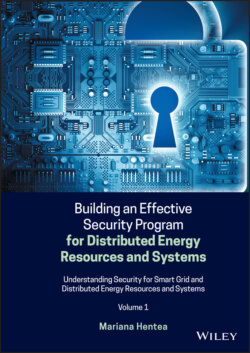Читать книгу Building an Effective Security Program for Distributed Energy Resources and Systems - Mariana Hentea - Страница 25
1.2.5 Secure Energy Infrastructure
ОглавлениеFigure 1.12 depicts the relationship between secure energy infrastructure and Smart Grid characteristics to include power system reliability, power quality, integrated communication, and compatible devices and appliances.
Figure 1.12 Relationships on secure energy infrastructure.
Besides employing security controls to protect systems or networks, this work [Liu 2018] highlights the need to ensure that networks are deployed in configurations that allow them to have resilience in spite of cyber attacks being present. Network resilience is the ability of the network to withstand harm or to return to an acceptable operational condition after it has been harmed by external perturbations. From a network perspective, adversarial resilience happens through two basic mechanisms:
Properly setting up the connections between entities in a network to withstand threats and allow network protocols to have an avenue for redirecting communications when connections are broken.
Through feedback mechanisms that call forth additional redundancy in the network’s design to repurpose components to meet new challenges.
The resilience requires a network topological structure that can be adapted to provide enhanced resilience to attacks against a network. The authors argue that the performance and resilience of communication networks are intimately tied to their underlying topological structure. Networks whose topological graphs do not exhibit sufficient interconnection are brittle and can be easily broken by network attacks that break links or remove nodes from the network. Representing a network as a graph, the authors explore the notion of network connectivity as quantified by the Fiedler value. The magnitude of this value reflects how well connected the overall graph is. It has been used in analyzing the robustness and synchronizability of networks. The Fiedler value can be used by an adversary to determine locations where to attack a communication network and, conversely, how it can be used by network defense protocols to strengthen the network, thereby providing resilience to network attacks.
Due to the distributed nature of these DER systems, it becomes necessary to properly interconnect them with the rest of the Smart Grid network [ENISA 2016]. These communication networks must cover all the devices from the DER systems in order to enable remote control from the utility and operation centers and ensure their efficient interaction within the whole grid. Furthermore, as they are distributed, these communications will need to be secured to protect them from attacks and accesses from unauthorized users.
